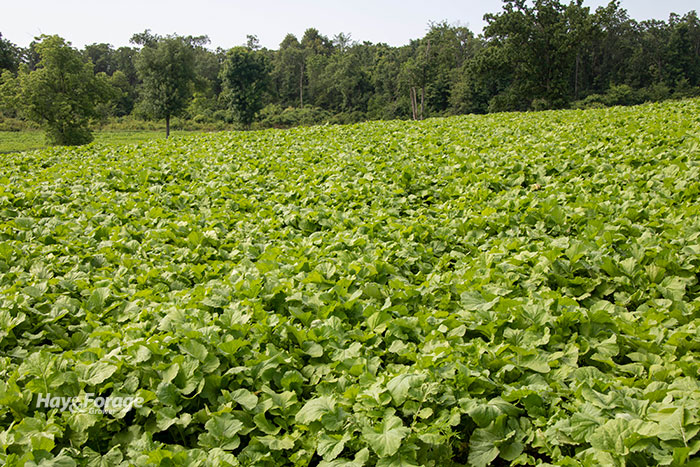
Brassicas can be utilized as fall and winter grazing crops, but there are a few things that University of Arkansas (UA) Forage Program Associate Kenny Simon says you should know before turning a herd of cattle out to graze freely.
The overall forage quality of brassicas is excellent; however, they do not contain enough fiber to sustain a healthy diet and proper nutrition on their own, especially for ruminant animals.
Brassicas should account for no more than 75% of a ruminant’s diet. “Providing free choice hay or planting a mixture of brassicas and small grains will supplement enough fiber for adequate rumen activity,” Simon explains in UA’s Animal Science E-News.
Brassicas can be used in well-managed rotational grazing systems, or it can be stockpiled. If used for managed grazing, only turn livestock out to graze once the plants have reached a height of 14 to 16 inches.
Although leaf size and plant height requirements might be met at 40 days, the highest leaf yield and bulb production will occur after 60 days. Allow livestock to graze the forage no shorter than 6 to 8 inches since regrowth is initiated at the crown of the plant. Simon writes, “The regrowth will be ready for a second or final grazing in as little as four weeks in some cases.”
Livestock need an adjustment period when being transitioned to a brassica-filled grazing area. Simon notes, “To train the animals, allow access to a small area of brassica forage until they begin grazing and provide hay or other feed to ensure adequate nutrition.” He also mentions that during this training period, livestock will often eat all other forages available before consuming the brassicas as they are an acquired taste.
Brassica crops can cause health disorders such as bloat, acidosis, or trace mineral deficiency in grazing animals if not managed properly. Simon suggests you use ample caution when grazing brassicas and provides the following management tips, which can greatly reduce the risks associated with grazing this type of forage:
• Introduce grazing animals to brassica pastures slowly. Avoid abrupt changes from dry summer pastures to lush brassica pastures. Don’t turn out hungry animals that are not adapted to brassicas into a brassica pasture.
• Brassica crops should not constitute more than 75% of the animal’s diet. Supplement with dry hay, plant brassica in mixture with small grains, or allow access to a stockpiled grass paddock if continually grazing brassicas.
• Offer brassica-grazing livestock access to a complete trace mineral salt supplement that contains iodine.

C.J. Weddle served as the 2020 Hay & Forage Grower editorial intern. She currently attends Mississippi State University, majoring in agricultural education, leadership, and communications. She grew up on a farm in Vardaman, Miss., where her family raises sweet potatoes and soybeans.

